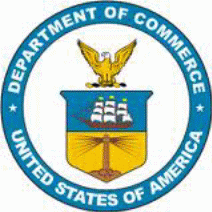TTAB National Goal Rec Letter
TTAB National Goal Rec Letter (v2).docx
Survey of International Air Travelers
TTAB National Goal Rec Letter
OMB: 0625-0227


UNITED STATES TRAVEL AND TOURISM ADVISORY BOARD
June 9, 2015
The Honorable Penny Pritzker
U.S. Commerce Secretary
Washington, DC
Dear Secretary Pritzker;
This letter is the final work product from your TTAB’s Technical Working Group (TWG), established to make recommendations on achieving the national goal of a best-in-class international arrivals experience. We must stress that both this TWG and the TTAB overall fully understand border security is the first and foremost task of Customs and Border Protection (CBP). Our study takes a look at current measurement techniques on customer service and the quality of actionable data that comes from that analysis. We then will outline the findings and suggested areas of opportunity for augmenting current practices. In summation there were three objectives our TWG undertook:
To provide an objective assessment on the key drivers of a traveler’s perception of the international arrivals experience and decision to travel,
Development of revised surveys on performance and recommend questions to best measure the key drivers identified under objective #1,
An executable recommendation on how best to conduct continued survey assessment against the National Goal including interval, methodology and execution. (A full deck of our analysis is attached as an addendum to this letter.)
It has been an honor to participate in this effort, and we want to specifically acknowledge the help and leadership of the co-members, Kathleen Matthews and Greg Stubblefield. The internal insight teams respectively from Universal Parks and Resorts, Marriott International, Inc. and Enterprise Holdings cannot be thanked enough for their expeditious review of current surveying product and their tireless efforts in finding models to improve the process. Of course, additional thanks must go to CBP, who took no pride of authorship in sharing their practices, and committed to being change agents on behalf of our country. The international arrival experience takes a team approach, and we also must thank American and Delta Airlines for their participation in our efforts.
The diagnostic plan employed by the internal insights teams was conducted in two phases: 1) Discovery and 2) Research. The Discovery phase incorporated an inventory and thorough analysis of six existing sources of data (SIAT, CBP, US Travel Association, Airlines, Airports and Airports Council International), site visits to two major international gateways (Orlando International and Dulles), and conference calls with DHS Loaned Executives and Airport Authorities. The Research phase involved an in-depth interview with an exceptionally high volume global traveler, mapping the international entry process at seventeen international gateway airports, conducting inductive analysis on the existing SIAT and CBP data to determine drivers, and conducting primary research to determine expectations involving bi-coastal focus groups and an online survey among inbound travelers that had recently experienced the international entry process.
Objective #1 - The private sector insight teams reviewed a myriad of statistical analysis currently touching a portion of the arrival process. Included in this product offering are studies conducted by the Airports, Airline Companies and CBP. As expected, key driver takeaways from these studies were wait times primarily drive the visitor’s experience, but, perhaps not surprisingly, over 60% stated staff courtesy as potentially mitigating the impacts from those wait times. This is an important fact considering the CBP’s own analysis drew a modestly positive correlation between a good entry experience and the desire to make a return trip to the United States. CBP line officers need to understand they are the nation’s first line of defense, but they also serve indirectly as goodwill ambassadors of this country, and represent an important “first impression.”
Objective #2 - Regardless of which methodology or survey results were studied, all answers lead back to two compelling priorities for CBP: wait times/efficient processing, and staff professionalism/courtesy. CBP’s current modeling does cover the two most basic questions - guest’s perception of a wait time and guest's perceptions of professional courtesy. The reasoning behind the use of the word perception is external environmental factors can impact one’s perception, so those factors need to be as controlled as possible within the study area. Also, research shows that the perception of “wait time” encompasses the entire arrival process (gate, walk time, processing, baggage and exit), and not solely time spent in primary processing.
Primary research suggests an additional question would provide insight by gauging a guest’s perception of ‘friendliness,’ an important driver of top box scores. Additionally, an overall experience question should be used as a benchmark to track progress over time. The current CBP survey contains a summary question ‘Considering your entry process experience, do you feel welcomed to the U.S.?’ This is itself a driver of satisfaction, but an unreliable measure given that ‘welcoming’ is a higher order behavior in the overall mix of experience drivers.
Objective #3 – TWG believes we can further our collective national goal of reaching best-in-class service levels on international arrivals by adopting a series of recommendations arising from the results of our assessment and analysis. We acknowledge that the current CBP survey is a comprehensive gauge on the arrival experience, but we believe it can be greatly enhanced by:
Incorporating the suggested questions regarding perception of “friendliness” and perception of overall experience into the CBP survey (please see Attachment A hereto);
Increasing the sample size to gather a significantly larger sample of international arrivals’ opinions, by:
Incorporating questions from the CBP survey (5 – 6 focused on perception of wait time, perception of professional courtesy, perception of friendliness and overall experience) into the existing Commerce Dept. SIAT survey, thereby achieving a efficient, collaborative use of federal resources;
Funding to expand the SIAT to enhance its role as a data source for cross-agency deliverables including, but not limited to, tracking CBP-related customer perceptions; quantifying country-specific visitation to individual US destinations; and generating data in support of federal balance of trade calculations.
Funding to allow the CBP survey to be conducted at more airports (of various sizes measured by total international arrivals)
Seek cooperation from partners in the private sector (airports, airlines, U.S. Travel, etc.), as well as Brand USA, to incorporate those identical survey questions into their own guest satisfaction practices, and share the results with CBP.
Evaluate technology solutions to reduce costs of survey administration and analysis.
We believe the recommendations above will provide a very robust assessment of our progress on the national goal. We envision a national scorecard against the wait time/courtesy/friendliness/overall experience criteria, as well as individual post assessments which should be incorporated into the existing CBP Port Action Plans. All with an eye towards identifying action plans and remediation to continually improve our overall international arrival satisfaction. We would envision a staff liaison from CBP and DOC be assigned to monitor implementation of the surveys and ensure results become change mandates to individual port action plans.
Madame Secretary, it has been a privilege to lead this effort, and I greatly appreciate the contributions of the entire TWG team.
Sincerely,
John Sprouls Sam Gilliland
Chairman – TTAB Chairman
Technical Working Tourism & Travel
Group Advisory Board
CBP SURVEY RECOMMENDATIONS
We believe the combination of questions noted below provides the most accurate gauge of the international traveler’s border experience. As noted, some already exist in the current CBP survey. Also, we have footnoted those that should, at a minimum, be added to the SIAT survey, and any private sector partner surveys as recommended.
To what degree do you agree or disagree with the following that apply to the CBP Officer who processed you at the inspection booth?
Processed your entry efficiently (measures satisfaction with minimum efficiency requirements)1,2
Was professional (is a proxy measure for fairness and respect and basic courtesy)1,2
Was welcoming (is a driver of better than average experience)1,2
Was friendly (is a driver of better than average experience, i.e. the everyday basic pleasantries)2
To what extent do you agree or disagree with the following statements on the overall inspection area?
The signs were clear and informative1
The layout through the entry process was clear and easy to follow1
Officials were helpful in guiding travelers through the processing area1
(all three of these measure MUST BE basic communication and assistance)
How would you characterize your wait time? (Short, Reasonable, Long): (measures the extent to which they are exceeding wait time expectations, a key driver of better than average experience)1,2
On a five point scale from Excellent to Poor, how would you rate your entry experience overall? (new overall measure to benchmark improvement over time)2
Considering your entry process experience, do you feel welcomed to the U.S.?1
| File Type | application/vnd.openxmlformats-officedocument.wordprocessingml.document |
| Author | Wilson, Fran (NBCUniversal, Orlando) |
| File Modified | 0000-00-00 |
| File Created | 2021-01-24 |
© 2025 OMB.report | Privacy Policy